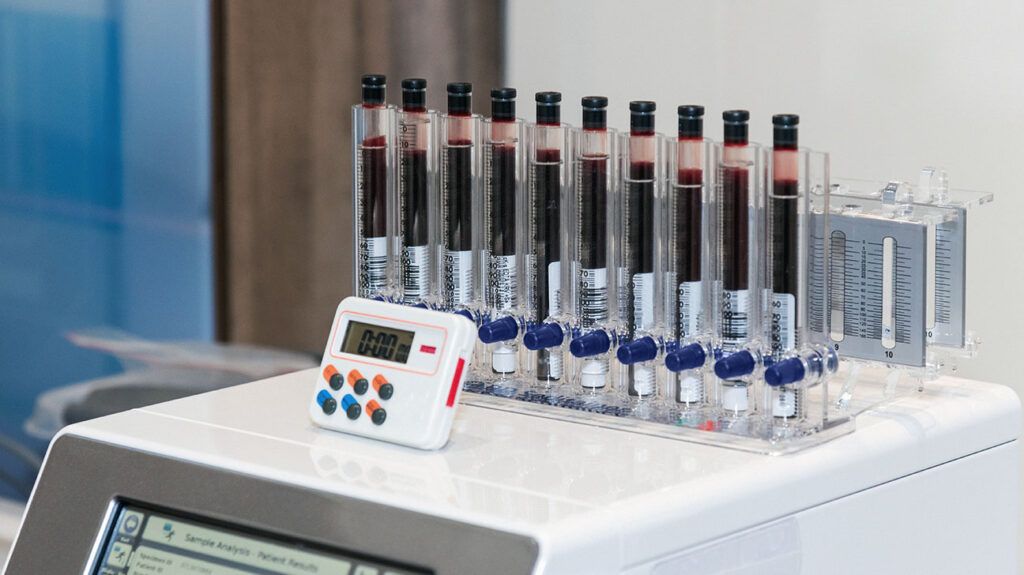A cortisol test involves taking a small sample of blood to measure the level of cortisol in a person’s body. Cortisol is a hormone that plays a vital role in the body’s response to stress.
If the results of the test show that cortisol levels are outside the standard range, this can suggest a range of conditions, including Addison’s disease and Cushing’s syndrome.
The procedure is relatively simple and should not lead to any significant side effects.

Cortisol is a hormone that
When a person believes that they are in danger, the brain releases an extremely powerful chemical called adrenocorticotropic hormone (ACTH).
This hormone triggers the adrenal gland, which is located just above the kidneys, to release cortisol.
The body uses cortisol to halt any non-essential physical processes. These include growth processes and reproductive and immune functions.
As non-essential functions shut down, the person will gain a burst of strength and energy to deal with the potential threat.
The release of cortisol may also cause emotional arousal, giving people strong emotions, such as anger and fear.
Cortisol also increases blood sugar levels and insulin resistance.
Finally, cortisol supports several different systems in the body, including:
- nervous system
- immune system
- skeletal system
- respiratory system
Cortisol levels tend to be highest earlier in the day, so a doctor will often recommend scheduling a test in the morning.
People will not typically need to fast in preparation for the test. However, a doctor may ask them to stop taking certain medications that might affect cortisol levels. It is essential to never stop taking a medication without speaking to a doctor first.
A cortisol level test usually includes the following steps:
- The individual will sit in a chair, and a technician will tie a rubber band around their upper arm just above the elbow. This stops blood flow and makes the veins more visible.
- The technician will identify a vein and clean the area around it with a wipe that contains alcohol.
- The technician will insert a needle into the exposed vein.
- Blood from the vein will travel through the needle into one or more small collection tubes.
- The technician will take off the rubber band before removing the needle and applying pressure to the site.
- After releasing the pressure, the technician will often apply a small adhesive bandage to the site.
- The technician will then send the blood to the lab for processing and examination.
When a technician carries out the cortisol level test between 6 a.m. and 8 a.m., the results will typically be within the range of 10–20 micrograms per deciliter (mcg/dL) in a healthy person.
A doctor will generally consider measurements outside of this range to be abnormally low or high. However, testing techniques vary between facilities. People should discuss their results with their doctor to confirm what their score may mean.
When test results are low, it may indicate one of the following:
- Addison’s disease
- Hypopituitarism, a condition in which the pituitary gland does not stimulate the adrenal gland to produce cortisol
Certain medications, including phenytoin and androgen drugs, may also reduce the levels of cortisol.
Symptoms of low cortisol levels
When test results indicate high cortisol levels, this may be because the person has a tumor in a part of the body that impacts the production of cortisol, such as the adrenal or pituitary gland.
Some drugs may also elevate levels of cortisol, including estrogen-containing drugs and synthetic glucocorticoids, such as prednisone.
Physical and emotional stress can cause raised levels of cortisol too, as can certain illnesses.
Women may have increased levels of cortisol during pregnancy.
High cortisol levels
Healthcare professionals consider the test to be safe.
There are some side effects of blood removal from the arm, including temporary scabbing and bruising or discoloration at the site of needle insertion.
In rare cases, a person may have more severe side effects, including:
- feeling lightheaded or faint
- excessive bleeding
- infection
- hematoma, where blood pools under the skin at the injection site
What does a cortisol test tell you?
A cortisol test measures cortisol levels to evaluate adrenal gland function. It helps diagnose conditions like Cushing’s syndrome (high cortisol) or Addison’s disease (low cortisol).
What are the symptoms of high cortisol levels?
Symptoms of high cortisol levels
How can I check my own cortisol levels?
It is possible for a person to check their own cortisol levels with an at-home cortisol test. Typically, these are saliva tests and can be purchased online.
However, it is preferable to get tested at a doctor’s office or hospital as this is generally more accurate than a self-collected test.
If a doctor orders a cortisol test, there is a strong likelihood that they are trying to diagnose a specific disorder.
The doctor will discuss the results of the test with the individual. If a cortisol level test reveals low or high levels of cortisol, a person is likely to need additional testing to confirm a diagnosis.
Most people do not experience any significant side effects from the test and can continue with their everyday activities.
